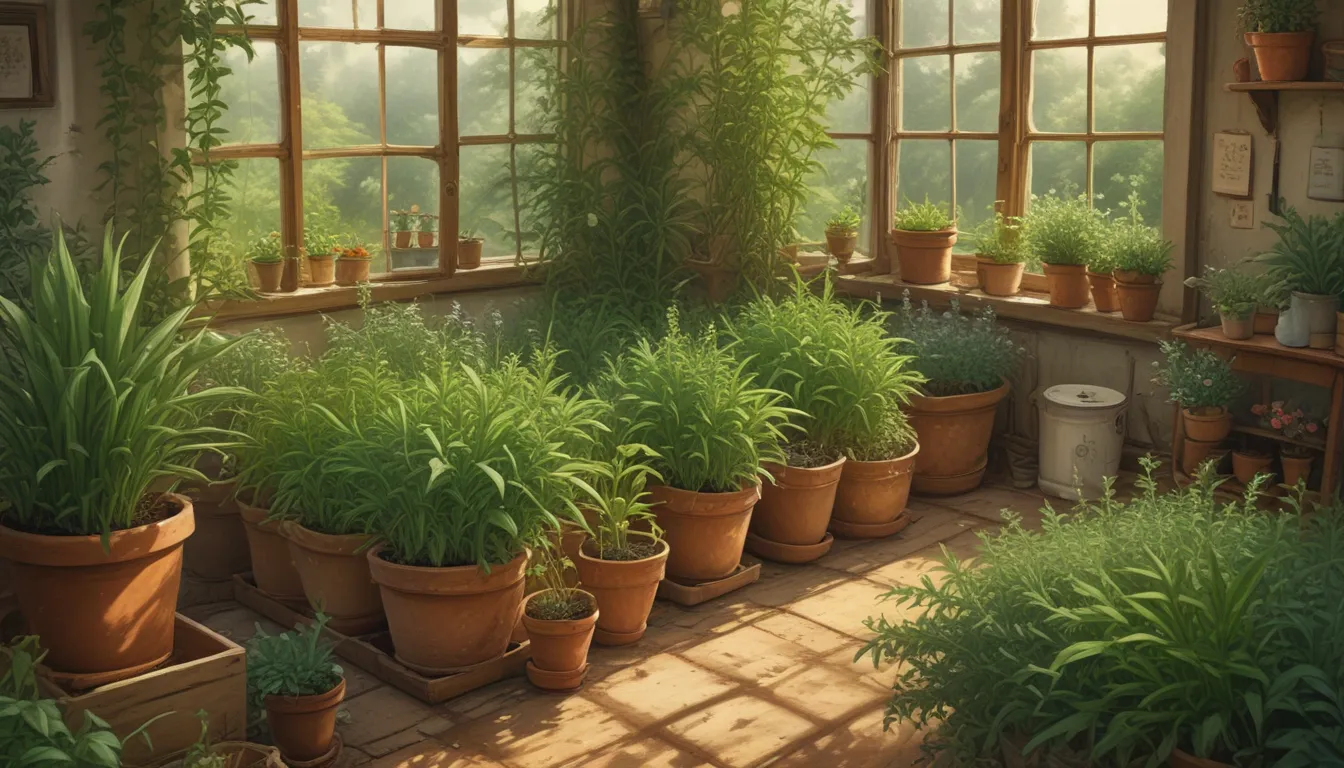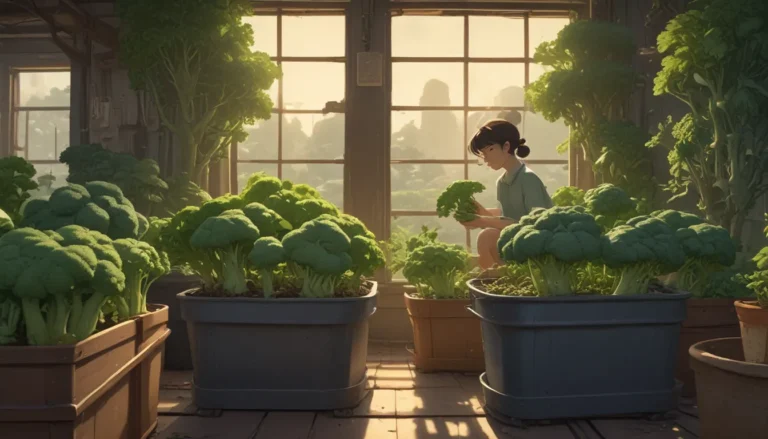The Ultimate Guide to Growing and Caring for French Tarragon: A Kitchen Garden Staple

Are you looking to add a touch of sweet licorice flavor to your dishes straight from your garden? Look no further than French tarragon. This delightful herb is not only easy to grow but also adds a unique flavor to various dishes, making it a must-have in any kitchen garden.
In this in-depth guide, we will delve into everything you need to know about growing and caring for French tarragon. From its cultivation and history to propagation, growing tips, pruning, harvesting, and more, we’ve got you covered with valuable information to help you successfully grow this aromatic herb.
So, if you’re ready to transform your cooking with the fresh and appealing flavor of French tarragon, let’s dive in and explore the world of this fascinating herb together!
What Is French Tarragon?
French tarragon, scientifically known as A. dracunculus var. sativa, is an herbaceous perennial that boasts a sweet licorice flavor. This culinary gem is native to northeastern Europe and central Asia, making it a coveted ingredient in French cuisine and herb blends.
When compared to its Russian counterpart, French tarragon takes the crown for its fuller flavor and superior culinary qualities. It’s a staple in French dishes, where its fresh leaves are widely used in everything from classic sauces to condiments, beverages, and more.
Not to be confused with the Russian variety or Mexican mint tarragon, French tarragon stands out for its delicate green and silver leaves, upright growth, and fragrant aroma. Whether you’re a seasoned chef or a home cook, this herb is sure to elevate your culinary creations to new heights.
Cultivation and History
With roots dating back to the Mongol invasion of Europe in the 13th century, French tarragon has a rich history steeped in traditional medicines and seasoning. Legend has it that Saint Catherine of Siena brought this herb to France in the 14th century, spreading its culinary influence throughout Europe.
Today, French tarragon thrives in herb gardens and kitchen pots, providing a steady supply of fresh leaves for cooking. This low-maintenance herb does well in USDA Hardiness Zones 4-9 and goes dormant in winter, only to reappear with vigor in late winter or early spring.
As a “nurse” plant, French tarragon is beneficial in the garden, deterring pests and enhancing the growth of neighboring crops like tomatoes, peppers, and eggplants. It’s an herb that not only delights the palate but also adds a touch of charm to your garden beds and containers.
Propagation
To propagate French tarragon, you’ll need to employ vegetative methods such as root division or stem cuttings. With root division, you can split the root ball into smaller sections to create new plants, while stem cuttings involve rooting stems to create new growth.
Both methods are effective ways to expand your French tarragon collection and ensure a bountiful supply of fresh leaves for your culinary adventures.
- Root Division:
- Divide root balls into smaller sections.
-
Plant divisions in containers or directly in the ground.
-
Stem Cuttings:
- Take stem cuttings in late spring or summer.
- Root stems in small pots and transplant once rooted.
How to Grow
To ensure the success of your French tarragon plants, follow these essential growing tips:
– Plant in full sun with well-draining soil.
– Provide afternoon shade in hot temperatures.
– Maintain a neutral pH of 6.5 to 7.5 for optimal growth.
With a few simple steps, you can create an ideal environment for your French tarragon to thrive and produce an abundance of fragrant leaves for your culinary creations.
Pruning and Maintenance
Regular pruning is key to encouraging branching and new growth in French tarragon plants. By shearing back stems and maintaining lush foliage throughout the season, you can ensure a steady supply of fresh leaves for your culinary endeavors.
After the growing season, plants will go dormant, signaling the time for a final pruning and winter preparation. By following these maintenance practices, you can set your French tarragon plants up for success in the following season.
Harvesting
Harvesting French tarragon leaves is a straightforward process that involves cutting stems back to a manageable height. By stripping the leaves from the stems and timing your harvests correctly, you can enjoy an abundant supply of fresh leaves for cooking and preserving.
Whether you’re preparing dishes with eggs, fish, poultry, or vegetables, fresh French tarragon leaves are sure to add a delightful touch of flavor to your culinary creations.
Preserving
To preserve the fresh flavors of French tarragon, consider freezing or drying the leaves for long-term storage. Freezing offers better flavor retention than drying and allows you to enjoy the unique taste of this herb throughout the year.
By following simple preservation methods, you can extend the shelf life of your French tarragon leaves and continue to elevate your dishes with their aromatic essence.
Recipes and Cooking Ideas
French tarragon is a versatile herb that shines in a variety of dishes, from salads and dressings to main courses and condiments. By experimenting with different combinations and cooking techniques, you can unlock the full culinary potential of this flavorful herb.
Whether you’re adding a sprig of tarragon to a refreshing summer spritzer or incorporating it into a savory dish, the possibilities are endless when it comes to cooking with French tarragon.
Quick Reference Growing Guide
Here’s a quick reference guide to help you grow and care for French tarragon with ease:
- Plant Type: Herbaceous perennial herb
- Water Needs: Moderate
- Native to: Central Asia and northeastern Europe
- Hardiness (USDA Zone): 4-9
- Exposure: Full sun or sun with afternoon shade
- Spacing: 6-12 inches
- Height: 24-36 inches
- Spread: 12-15 inches
By following these guidelines and tips, you can cultivate a thriving French tarragon plant that will enhance your culinary creations and bring a touch of elegance to your garden.
Conclusion
French tarragon is more than just an herb – it’s a culinary essential that adds a unique and delightful flavor to dishes. By incorporating this herb into your garden and kitchen, you can elevate your cooking to new levels of sophistication and taste.
With its rich history, aromatic essence, and culinary versatility, French tarragon is a must-have herb for any aspiring chef or home cook. By following the tips and guidelines outlined in this comprehensive guide, you can successfully grow and care for this charming herb and enjoy a bountiful harvest of fresh leaves throughout the season.
So, whether you’re using French tarragon in classic sauces, herb blends, or innovative recipes, this herb is sure to inspire and delight your taste buds with its sweet licorice flavor. Embrace the magic of French tarragon in your garden and kitchen, and let its enchanting aroma captivate your senses with every dish you create.
How will you incorporate French tarragon into your culinary adventures? Share your thoughts and cooking ideas in the comments below – we’d love to hear from you!
For more herb growing tips and inspiration, be sure to check out our other informative articles on growing and caring for a variety of herbs in your garden.
In conclusion, French tarragon is a delightful herb that can add a unique and appealing flavor to your dishes. By learning how to grow and care for this herb properly, you can enjoy a bountiful harvest of fresh leaves and elevate your culinary creations to new heights. Happy growing and happy cooking with French tarragon!





